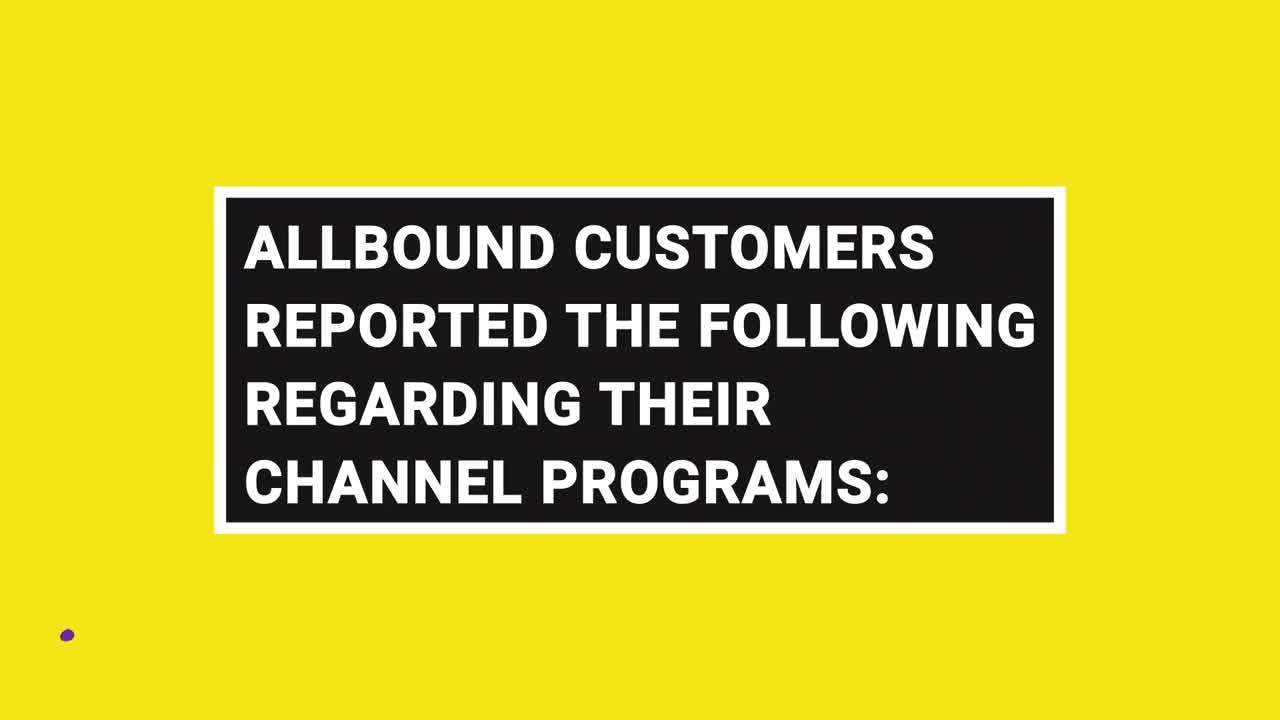
How to Build a Video Strategy
A single video can transform pages of ideas and concepts into a powerful and impactful visual experience. Pair a video with a strong marketing strategy and you can have anywhere from ten to tens of thousands of people viewing the same video at the same time and receiving the same goal-driven messaging.
In this guide, we explore how to set goals, choose the right type of video, pick a video hosting platform, and more.
Chapters
The State of Video Marketing
Building a Video Marketing Strategy
Choosing the Right Type of Video
Choosing the Right Video Style
Making Your Videos
Picking the Right Video Hosting
Launch Your Video Marketing Strategy
The State of Video Marketing

Video has come a long way since YouTube hit the scene with a simple video about elephants way back in 2005. In fact, it’s estimated that the average Joe will watch more than 100 minutes of video per day by 2021.
This explosive growth isn’t lost on marketers. According to Wyzowl’s State of Video Marketing Survey, 92 percent of marketers report that video is an important part of their overall marketing strategy—the highest that number has been since Wyzowl started surveying marketers and consumers alike in 2015.
But that’s not all marketers have to say about what video marketing is doing for their businesses, according to the Wyzowl report:
- 88% say video gives them a positive ROI.
- 83% say video has helped them generate leads.
- 87% say video has increased traffic to their website.
- 95% plan to increase or maintain their video spend in 2020.
Although some marketers view YouTube, Facebook, Instagram, Twitter, and other popular social networks as oversaturated with video, other networks are ripe for growth, including LinkedIn and TikTok.
LinkedIn, in particular, emerged in the Wyzowl report as the most successful network for video marketing, with 87 percent of LinkedIn video marketers reporting success on the channel. TikTok, despite its trendy vibe, likewise presents huge potential. Although only one in 10 video marketers have given the platform a shot, 66 percent of those marketers have reported success on the channel.
Some marketers view popular social networks as oversaturated with video, other networks are ripe for growth, including LinkedIn and TikTok.
Building a Video Marketing Strategy

When adding video to your arsenal, remember that you don’t just need marketing videos, you need a video marketing strategy—and it starts with two things: goal setting and buyer personas.
Although video production isn’t nearly as expensive as it was a decade ago—especially with so many DIY options available—video creation and marketing still require a hefty investment of time and, sometimes, money. But that investment is worth it, according to 89 percent of video marketers who report that, in general, video gives them a good return on their investment.
But you can’t just whip out your iPhone, film something on the fly, post it to Facebook, and expect it to boost traffic or increase sales. Your video marketing strategy needs to be calculated, goal-driven, and thoughtful.
When adding video to your arsenal, you need a video marketing strategy—and it starts with two things: goal setting and buyer personas.
Step 1: Set SMART Goals and KPIs
To reap the benefits of video, your marketing strategy needs to be built on goals that are SMART: specific, measurable, achievable, relevant, and time-sensitive. You can create these goals by asking the following questions:
- Specific: What is the precise outcome you’d like your video marketing efforts to accomplish?
- Measurable: How will you measure the results of your efforts?
- Achievable: Is your goal attainable or is it pie in the sky?
- Relevant: Does the goal align with your organization’s larger goals and business trajectory?
- Time-Sensitive: When do you need to achieve the goal by?
Some of the most common video marketing goals are the same as those you’ve set for your overall marketing strategy, such as brand awareness, growing website traffic, boosting customer happiness and engagement, generating more leads, and increasing conversion rates.
To achieve these strategic goals, you have to choose the key performance indicators (KPIs) that will help you measure the effectiveness of your video marketing efforts. Some KPIs to consider include:
- Cost per lead
- Customer acquisition cost
- Impression rates
- Submission rates
- Video views, comments, or shares
- Cost per full video view (did the viewer watch the video from start to finish?)
- Click-through rate
- Traffic-to-lead ratio
- Customer lifetime value
For example, if your goal is to build brand awareness, then your KPI may be the number of video views, comments, or shares. If your goal is to boost conversion rates on a subscription or download form by adding a video, you’ll likely track traffic and conversion rates.
Your goals and KPIs will also play heavily into the type of video hosting that you use, because some platforms—such as Wistia, Vidyard, and Vimeo—offer engagement analytics, which can help you track and calculate the ROI of your video marketing efforts. We’ll talk more about video hosting options soon.
Pro Tip:
If your goal is for your video to go viral, go back to the drawing board. Videos go viral organically; virality is unpredictable and you can’t plan for it. If you happen to produce a video that achieves virality, consider it a happy coincidence but don’t expect to replicate it.
Step 2: Pick Buyer Personas to Target with Video Content
Now that you’ve set your goals and KPIs, you have to decide which buyer personas to target with your video marketing efforts.
A buyer persona is a semi-fictional representation of your ideal customer that is created based on existing data and market research. Buyer persona research tells you where your customers spend their time, what websites they frequent, what technology and social networks they use, and more. With buyer personas, you can answer the following questions:
- What type of content will prompt a particular customer to engage with your company?
- How does your ideal customer prefer to engage in the sales process?
- What problems do your customers need to solve, and how can your business help them?
As you explore your buyer personas, you’ll likely discover that a particular type of customer doesn’t engage with video content, while another type of customer loves video and shares content regularly with friends and colleagues. With this fundamental research in tow, you’ll know what attracts new leads and drives them to make a purchase—and this will help you round out your marketing strategy.
For example, according to Brightcove’s 2018 Video Marketing Survey, 85 percent of millennial consumers said they purchased a product or service after watching a video. If you have a buyer persona that’s a millennial, they may just be an ideal target for your video marketing efforts.
Additionally, as you get to know your buyers and how they interact with content through your buyer persona research, you can determine the type and style of video that your buyer personas prefer. Does your baby boomer persona prefer live-action videos with emotionally captivating storytelling? Or do they want movable type and animated explainer videos?
If your buyer personas prefer different styles of video, consider creating different types of video for the same goal, then analyze the performance and prioritize the one that’s working the best in future marketing campaigns.
Remember: If you’re not creating video content that targets the right buyer persona at the right stage of the Buyer’s Journey, your audience could end up ignoring the video entirely—and that’s time and money you can’t get back if your video flops.
Pro Tip:
Spend some time reviewing what your competitors are doing on the video front and weigh how people are responding to their content.
Choosing the Right Type of Video

There are many types of videos you can produce in order to support your marketing goals—you have your pick of options. Whether showing prospects how your software works or celebrating a company milestone, video can be catered to every marketing goal and every buyer persona.
Here are some of the most common types of marketing videos and how you can put them to work for your marketing strategy:
Product Launch
Engage prospects and nurture fans by building hype around a new product or service. Videos created for the launch of a new product, service, solution, or feature should be upbeat and focus on building excitement. These types of marketing videos aren’t evergreen, but they can get people to sign up for a demo, live webinar, or an upcoming event.
Event Coverage and Recaps
Whether it’s live broadcasting your business’s trade show presence or recapping to show people what they missed, live streaming can be a great way to scale your message. According to research by Eventbrite, 95 percent of event creators that used video said it was an effective event promotion strategy.
Product Demos and How-Tos
Educate and engage your prospects with a product demonstration or explainer video. Some brands have products and services whose value propositions aren’t easy to grasp up front, which can cause friction. Consider providing prospects with videos of your team members explaining tricky concepts or walking through common concerns or frequently asked questions. These types of videos can come in particularly handy during the sales process.
Here’s what people have to say about these types of videos:
95% of video marketers say video has helped increase their customers’ understanding of their product or service.
43% of video marketers say product videos have reduced the number of support calls they’ve received.
64% of customers say they’re more likely to buy a product after watching a video about it.
95% of video marketers say video has helped increase their customers’ understanding of their product or service.
Behind the Scenes
Give prospects an inside look at your company. Behind-the-scenes videos give viewers a transparent all-access pass for getting to know the people behind the product. Help customers learn about your company’s values so they can see what makes your company tick and why you’re their ideal partner. A simple video introducing yourself also provides the authenticity prospects crave by showing that you’re a real person who is ready to be an ally and resource.
Recruitment and Hiring
For major hiring pushes, parlay your behind-the-scenes footage into a video focused on company culture. Capture video at your company’s annual off-site, interview employees about what they love about working there, or highlight the perks of working at your company. These types of videos aren’t only good for recruitment, but they’re also great for building brand awareness and transparency.
Webinars
Whether live or recorded and on-demand, webinars are the perfect venue for putting your company’s thought leadership and expertise on display. Webinars are also great for lead generation, because they can be used time and again in email marketing and on your website to capture the names and email addresses of people who want to hear what you have to say and potentially buy what you’re selling.
Social Videos
Instead of trying to sell something or create a heavily produced video, consider creating something on the fly or broadcasting on Instagram or Facebook Live. Whether something interesting is happening in the office or you want to share a quick look at what your team is up to, social videos should be short and sweet and timely or live.
Testimonials
Video will always speak louder than words, which is why video is a great way to put reviews and case studies front and center. After all, your prospects will always be more likely to buy in and do business with you if they see other happy customers.
Sales Videos
Proposals are often dense, text-heavy documents that don’t leave much to the imagination. By pairing a proposal with video content, you can lead prospects to the finish line in an exciting, engaging way. Consider showcasing videos of current customers sharing their experiences with your brand, or of your team welcoming the new prospect to the brand family.
Choosing the Right Video Style

There are lots of different types of videos, but there are also different styles of videos, which will dictate the resources you’ll need to pull the video off and the budget you’ll want to set aside for your video marketing project.
Moving Graphics
Moving graphics videos use text, shapes, images, music, and sometimes a voice-over to communicate an idea in a visually compelling way. Moving graphics videos have flexibility and can be used for achieving a variety of marketing goals.
Example: Explainer Video

Animation
Animated videos are a great way to depict scenarios or situations that may be hard to replicate with real people in real time. Oftentimes, animated content, such as a whiteboard-style video, can be made at a lower cost than live-action videos. Animation is great for explainer videos, tutorials, product walk-throughs, and even product launches.
Example: Animated Overview Video

Text-Driven
Believe it or not, words in motion can have a great impact on your viewers. If you have an infographic that you’d like to animate and make more dynamic, text-driven videos that use different fonts, weights, and colors can tell a compelling story and evoke emotions. These videos can be used at any stage of the Buyer’s Journey to achieve any of your marketing goals.
Example: Moving Infographic

Live Action
Live-action videos use real people in real locations and real situations in order to tell a story. Whether you hire actors, feature real people at your company, or enlist clients you’ve worked with, this style of video can be funny, informative, entertaining, or educational. Live-action videos are great for achieving brand awareness goals or giving prospects a walk-through of your product.
Example: Brand Awareness Video
Making Your Videos

Depending on the type and style of video you decide to produce, you’ll need any number of people resources and tools in order to move the product from start to finish. Depending on whether you choose an animated or live-action video, you’ll need people who can:
- Create a storyboard
- Write scripts or create talking points
- Hire actors and/or choose an app or software to create the video
- Handle setup and/or day-of activities (e.g., green screens, lighting, makeup)
- Record and/or create the video
- Edit the video
- Upload and optimize the video
- Market the video
- Analyze video data and report on ROI
Additionally, you may need to budget for specific tools to create your videos. Basic videos can be filmed using an iPhone and natural light, but you may want a more powerful camera with a lighting kit and backdrops. Advanced, live-action filming may require a green screen and sound equipment or microphones. You may also need to purchase an app or software to edit your videos.
If you have the budget for it, you also may opt to hire a third party like Flip Art Media to do the heavy lifting for you. The benefit of hiring a trusted partner to film or create your animated film is that they’ll come with all of the experience and equipment needed for filming. They’ll also have all of the editing equipment needed to perfect your video for its prime-time debut.
According to the Wyzowl video marketing report, 13 percent of non-video marketers report that they don’t use video for marketing because they don’t have the time to invest into video marketing, while another 20 percent say they don’t use video for marketing because it costs too much.
Luckily, with the popularity of video, there are tons of options for creating videos that perform and convert—and they don’t have to be time- or budget-intensive. Here are some low-cost and easy-to-use platforms for creating any type of video in whatever format you need:
- Biteable is an inexpensive tool for easily creating studio-quality animation.
- Doodly helps businesses create whiteboard-style videos with an easy-to-use drag-and-drop tool.
- Powtoon offers drag-and-drop templates to quickly create impactful videos for every stage of the buying journey.
- Animaker offers access to millions of photos and videos and uses a drag-and-drop builder to create animated or live-action videos.
- Lumen5 helps you quickly and easily repurpose text content into video.
Picking the Right Video Hosting

Once you’ve created your videos, it’s time to put them out into the world and start promoting them. There are many different video hosting platforms, so be sure to do your research and choose a platform that will help you achieve your marketing goals.
Vidyard
Vidyard was created with businesses in mind. This tool is anything but basic. Built for marketers, Vidyard has a suite of powerful video marketing tools that let you personalize videos with custom details, such as the viewer’s name, company, email, and more.
Features
- Live streaming
- Interactive events
- A/B split testing
- Detailed heat maps and graphs
- Social media integration
- Customizable players of your choice
- Accurate domain referrers
- Advanced analytics (i.e., filter views by player, video chapters, embeds, countries, email)
- List segmentation by viewer interest and video content
Vidyard also offers marketing automation integrations with whatever you have in your tech stack, including:
- HubSpot
- Eloqua
- Marketo
- Salesforce
- Chatter
- Hootsuite
- Google Analytics
- And more
YouTube
YouTube is the most recognizable and mainstream video hosting platform available. In fact, according to research by Animoto, YouTube is the No. 1 platform that affects consumer behavior and the primary way that consumers discover and research new products. As a Google product, YouTube also provides unmatched SEO benefits.
However, even with no upfront fees for posting, YouTube’s freemium model comes with a high cost in the form of ads. If you’re choosing a platform for your professional service or business, YouTube may not be the best hosting option.
- Unlimited bandwidth and file size
- Basic analytics (e.g., total views, link referrers, views by location)
- Sharing buttons
- Branded embedding
- Engagement (e.g., commenting, liking, rating)
- Responsive design
- Video editing
- Live streaming
- On-video CTAs
Vimeo
As the second most popular video hosting platform with more than 715 million views and 80 million members, Vimeo offers free and paid memberships with varying storage size, features, and control. For savvy marketers, Vimeo allows creators to display a link, CTA, text, or related videos at the end of the video, so you can usher your viewers through the buying journey.
This hosting platform draws a lot of creative content, including documentaries, music videos, and short films. Vimeo has a clean, elegant layout and a more niche audience than YouTube, making it a good option for businesses that want to host video in a more professional space.
Features
- User-friendly platform
- Social media integrations
- Basic engagement metrics (video views and likes)
- Captions or subtitles
- Display videos on designated domains
- Subscription plan for viewers
Vimeo also offers advanced metrics on its premium accounts, including:
- Live graphs
- Comments
- Downloads
- Locations
- Number of viewers who watched from beginning to end
Wistia
Wistia was created specifically for marketing professionals in order to get viewers back to your website so they can be converted into customers. With free and paid subscriptions, Wistia considers itself the video hosting platform for businesses, because it caters its platform offerings to brands.
Wistia has a powerful video heat map function that helps businesses understand the science behind viewing habits in order to deliver better content. The heat map breaks down which parts of the video were watched, skipped, and rewatched.
Basic Features
- Video heat maps and viewing trends
- Sharing buttons and embedding capabilities
- Fully responsive branding video player
- Device detection
Pro and Enterprise Features
- Email capturing and calls to action right in your videos
- Viewer history tracking
- Team collaboration capabilities to share internal or private content and collect feedback
- Integrations with HubSpot, Mailchimp, Marketo, Pardot, WordPress and Google Analytics
- IP filtering
- Unbranded player
- Domain restriction for video embeds
- SEO and video site maps
Launch Your Video Marketing Strategy

Are you ready to start delivering thoughtful, impactful video to your buyer personas? From discovery and storyboarding to execution and promotion, we do it all. When you’re ready, let’s talk about your goals, budget, and what kind of video you want to create.



